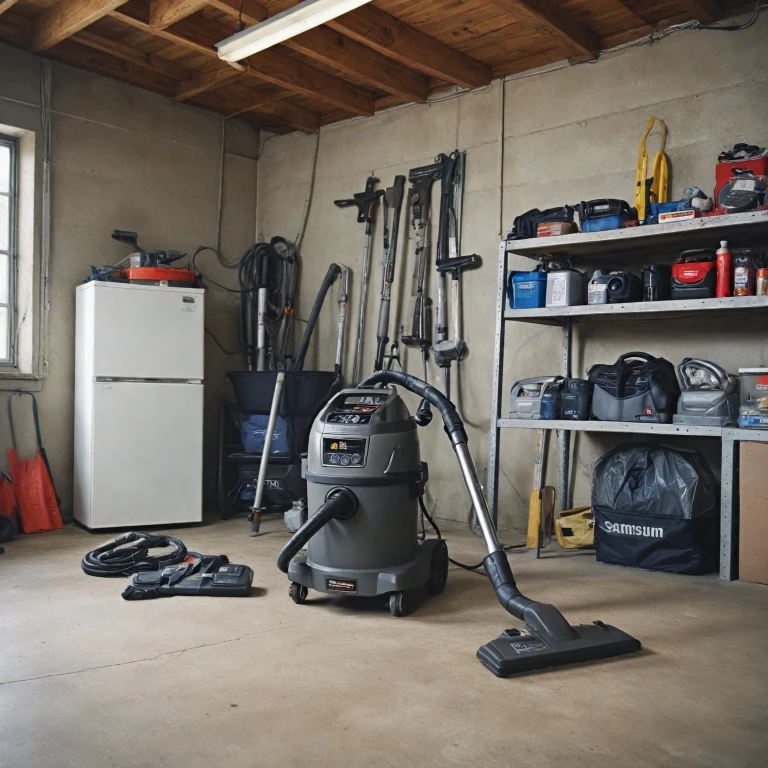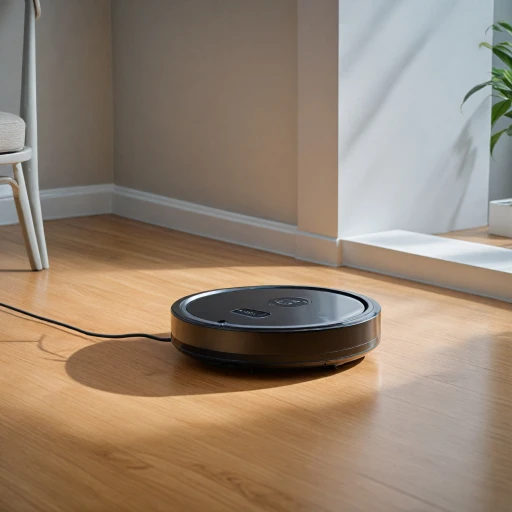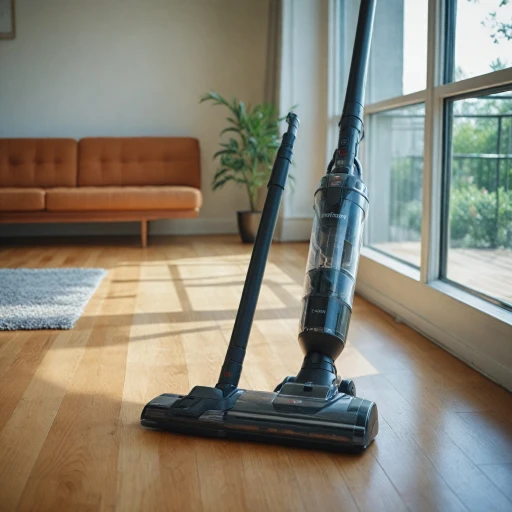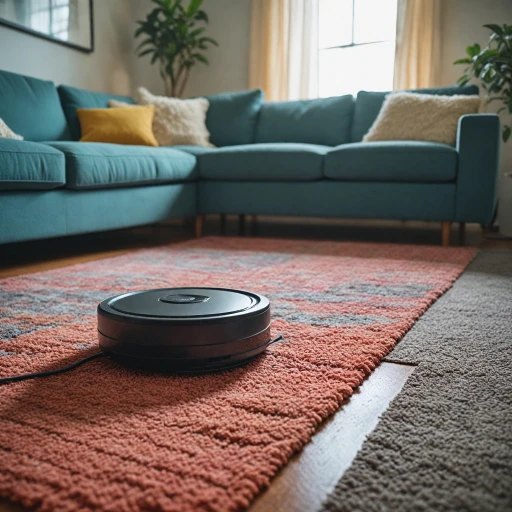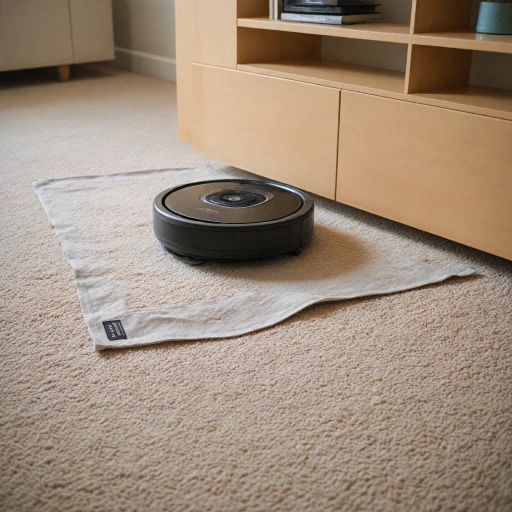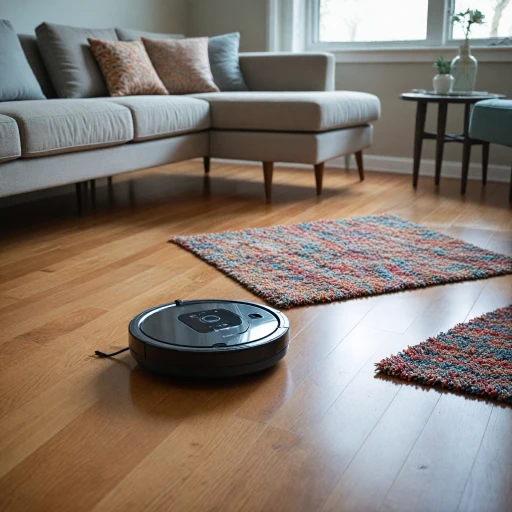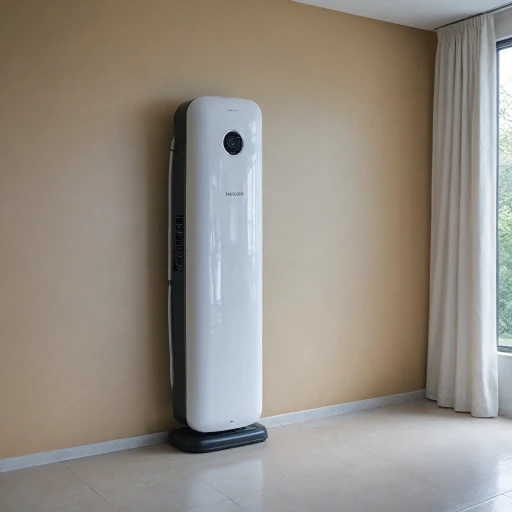Understanding the Basics of Robot Vacuums
Getting to Know Robot Vacuums: The Foundations
Robot vacuums have become a popular fixture in many households, heralded for their convenience and efficiency in maintaining clean floors. With cordless technology at their core, these compact devices are helping to simplify cleaning routines like never before. To better understand robot vacuums, here’s a brief overview of their workings:- Cordless Convenience: The essence of robot vacuums lies in their cordless design. Powered by rechargeable lithium-ion batteries, these vacuums navigate around your home without the need for a power outlet, providing greater flexibility than traditional vacuums tethered by cords.
- Autonomous Cleaning: Equipped with advanced sensors and mapping technology, robot vacuums can autonomously sweep through living areas. This feature enables them to detect obstacles and optimize their cleaning path while efficiently covering a range of surfaces, from carpets to hardwood.
- Wet and Dry Capabilities: Some models are equipped to tackle both wet and dry messes, offering versatility similar to traditional wet dry vacuums, albeit on a smaller scale. While they may not replace the heavy-duty capabilities of shop vacs when dealing with gallons of water or debris, they complement regular maintenance routines effortlessly.
- Hose and Attachments: Unlike shop vacs, most robot vacuums do not come with a hose or array of attachments. This means they may not reach crevices that bulky vacs, like those from brands such as Dewalt or Milwaukee, may handle with their larger hose diameters.
The Rise of Cordless Shop Vacuums
The Growing Trend of Cordless Shop Vacuums
In recent years, cordless shop vacuums have seen a marked rise in popularity among consumers seeking convenience and efficiency in their cleaning routines. This shift towards cord-free models has been driven by advances in battery technology, which have significantly improved the performance and runtime of these vacuums. As a result, cordless shop vacs offer greater mobility and ease of use compared to their corded counterparts.
One of the primary benefits of cordless shop vacuums is their portability. Without the restrictions of a power cord, users can effortlessly maneuver around their homes or workplaces, reaching tight spots without having to constantly switch power outlets. This is particularly beneficial for large-scale cleaning tasks or for use in spaces without convenient access to power sources.
Battery-operated shop vacuums often come equipped with lithium-ion batteries, known for their durability and energy efficiency. These batteries offer solid runtime that allows for extended use on a single charge, which is crucial for thorough cleaning sessions. Many brands, including Dewalt and Milwaukee, have integrated quick battery charger systems, ensuring minimal downtime between uses.
The versatility of cordless shop vacs is further highlighted by their capability to handle both wet and dry debris. This dual functionality makes them ideal for a variety of applications, from home cleaning to garage and workshop use. Moreover, models with a gallon capacity and features like a HEPA filter add to their efficiency, catering to specific cleaning needs and ensuring cleaner air quality.
Despite having a slightly higher regular price point compared to traditional vacuums, prices for cordless models vary according to features such as hose diameter, water lift capabilities, and overall power. Consumers are encouraged to consider their specific cleaning requirements when evaluating the best product to meet their needs.
Brands such as Ridgid and other reputable manufacturers offer competitive products in the cordless vacuum market, ensuring there’s a suitable option available for various budgets and preferences. Shop vacs that focus on the balance between wet dry capabilities and notable power efficiency are often key contenders for consumers looking for a robust and reliable cleaning solution.
Comparing Cordless Shop Vacuums to Robot Vacuums
Evaluating Key Differences Between Cordless Shop Vacuums and Robot Vacuums
When it comes to keeping your home clean, both cordless shop vacuums and robot vacuums offer unique benefits. Understanding their differences can help you determine which may be better suited for your needs. Cordless shop vacuums have evolved from traditional heavy-duty devices to more convenient, compact models. These vacs, such as those from brands like Dewalt and Milwaukee, are noted for their mobility due to battery power systems. This allows for cleaning in areas without access to electrical outlets. They are optimal for handling tough messes, including wet and dry debris, thanks to their robust power, often measured in gallons of capacity. Additionally, cordless shop vacuums are versatile, as they can be equipped with a hose of varying diameter for different tasks, from cleaning dust to sucking up a spill. In contrast, robot vacuums are celebrated for their convenience and automation. With intelligent programming, these vacuums can navigate a home independently, saving time and effort. Robot vacuums are excellent at maintaining everyday floor dust and debris. They lack the power for deep cleaning, a job where a shop vacuum shines, but with features like HEPA filters, they still ensure good air quality indoors.Comparing Cost and Performance
When comparing these two types of vacuums, it's essential to consider the cost versus performance. Cordless shop vacuums often come with a range of price points, depending on the power, gallon capacity, and additional features like water lift capacity or lithium ion battery systems. On the other hand, robot vacuums can vary significantly in regular price based on brand and technology but are usually more expensive due to their smart capabilities. Both devices require battery maintenance, albeit differently. Cordless vacs might need a separate battery and charger, whereas robot vacuums generally come with a built-in charging station. Ultimately, your choice might come down to specific needs:- For extensive, heavy-duty cleaning tasks: Cordless shop vacs, such as a 6-gallon wet dry model, might be the ideal option.
- For everyday maintenance with minimal intervention: A robot vacuum could serve best, especially in homes where cleaning autonomy is valued.
Choosing the Right Vacuum for Your Needs
Understanding Your Vacuum Needs
Choosing the right vacuum for your needs involves understanding the differences between various types of vacuums and what they offer. With options ranging from cordless shop vacuums to robot vacuums, it's essential to know what each type provides in terms of functionality, power, and convenience.
A key consideration is where and how often you'll use your vacuum. For those needing a flexible solution for both wet and dry messes, a cordless shop vacuum could be an excellent choice. Products like the Milwaukee wet dry vac or Dewalt cordless shop vac offer portability and power, combined with features like a sturdy hose and efficient water lift capabilities. These are well-suited for garage, workshop, or home cleaning tasks.
In contrast, robot vacuums are more geared towards daily maintenance of indoor flooring. They offer high-tech solutions, with options having automatic cleaning schedules and app connectivity. However, they generally struggle with large debris or liquid spills, as their design is intended for dust, pet hair, and smaller crumbs.
Budget Considerations and Features
Price is another factor steering your choice. Cordless shop vacs often come at a higher price point due to their battery technology, such as lithium-ion packs, which power them without the need for direct cord connection during use. Brands like Ridgid and Dewalt, offer models that feature multiple gallon capacities, from smaller 2-gallon versions to larger 12-gallon cordless wet dry vacuums.
Robot vacuums tend to vary widely in regular price too, with features like HEPA filters and intelligent mapping being premium add-ons. When deciding, it's important to weigh these capabilities against the specific cleaning needs of your space.
Portability vs. Automation
Consider whether portability or automation is more important to you. A cordless shop vac excels in flexibility, going where the cleaning is needed without limits of a cord. They often come with battery chargers to ensure that downtime is minimal. Meanwhile, robot vacuums excel in automation, giving you a "set it and forget it" convenience option.
Ultimately, the best vac for your needs will depend on these factors, along with considering the size of the area to be cleaned and any specific requirements you may have, like hose diameter for specific materials or wet pickup capabilities.
Maintenance Tips for Cordless Shop Vacuums
Ensuring the Longevity of Your Cordless Shop Vacuum
Proper maintenance is crucial for ensuring that your cordless shop vacuum continues to perform at its best. To keep your vac in top shape, remember to regularly check and clean various components.
- Battery Care: For effective power, make sure to regularly charge your battery. Consider using a battery charger designed for lithium-ion batteries to preserve battery life and maintain performance.
- Filter Maintenance: Ensure that the HEPA filter is clean and functional. A clogged filter can reduce suction power significantly. Regularly replace or clean this part depending on the vacuum's design.
- Empty the Tank: Depending on its usage, frequently empty the gallon tank to prevent excess weight and maintain suction efficiency. This is especially important for wet dry vacuums.
- Check the Hose: Inspect the shop vac's hose for any blockages or damage. A clear hose with an appropriate diameter ensures optimal performance.
- Keep It Dry: After using the vacuum for wet applications, ensure it thoroughly dries to prevent mold and odor, which could degrade the performance.
By following these maintenance steps, you're more likely to extend the lifespan of your cordless shop vacuum, ensuring it remains a reliable cleaning partner for years to come. Proper upkeep minimizes the risk of performance issues and protects your initial investment, making it a worthwhile consideration when comparing the initial purchase price to the cost of upkeep.
